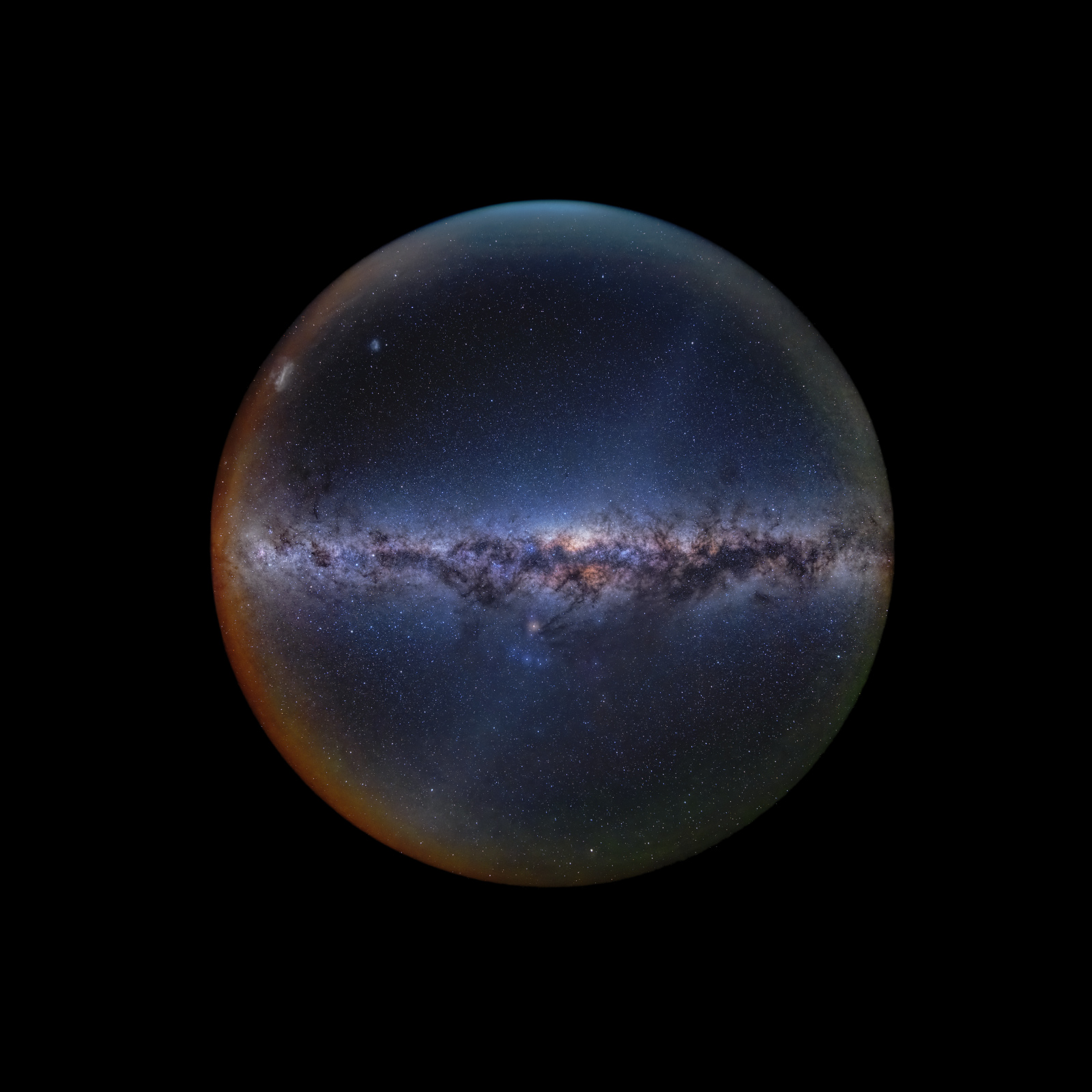
Galaxy in a snow-globe

This is an image of our home galaxy, the Milky Way.
The image is not a photo-mosaic or a photoshop manipulation
It was captured using
a circular "fisheye" lens .
The lens covers 180 degree field of view, or horizon to horizon
with the
camera pointed pointed at the zenith.
The lack of objects cluttering the horizon is due it being taken
atop a hill
that overlooks the vast, dry, very flat and desolate Mundi Mundi plains
(paradoxically "mundi mundi" is aboriginal for much water).
located in the far west reaches of New South Wales, Australia
The terrain is strikingly similar to Australia's nullabor plain.
Nearby is the historic mining town of Silverton, where the dusty core of our galaxy,
can be seen to transit directly overhead, a little before midnight in late June.
Mercury vapour lights, some 30 km away, at the Silver/Lead/Zinc mine in Broken Hill
(one of the largest such mines on planet Earth) illuminate the sky at the top of frame.
The red and green glow at left and right of frame are natural sky glow
due oxygen ionization in the Earth's upper atmosphere.
A second, much fainter diagonal glow can be seen straddling the ecliptic
but is not from our atmosphere. It is caused by sunlight scattering interplanetary dust
within the ecliptic plane of our solar system and is a hallmark of truly dark skies.
Vixen Polarie Star tracker + Manfroto carbon fibre tripod
Canon EOSRa + Canon 8-15 F4.0 L-Series Fisheye zoom lens
(set at 8mm )
Image and text copyright Peter J Ward 2024
